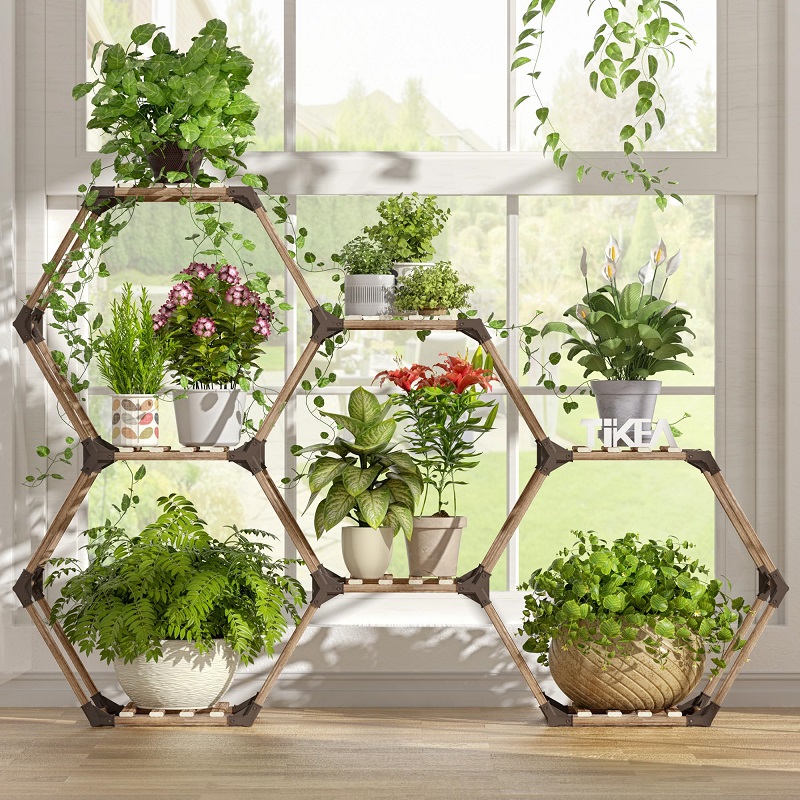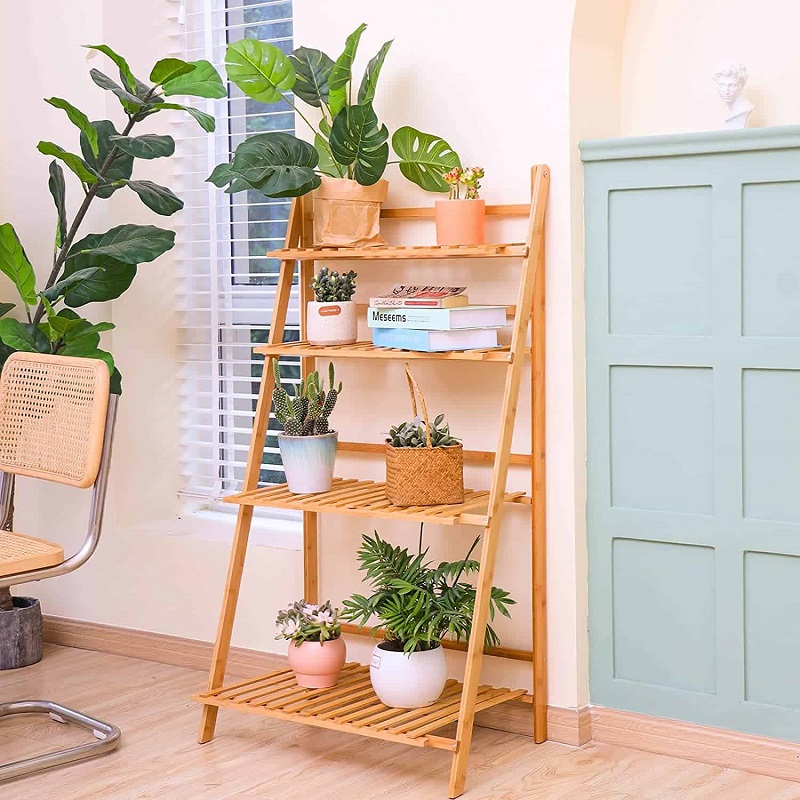Creating a beautiful and functional plant shelf can be a rewarding project for any plant lover. Not only does it provide a dedicated space for your plants to thrive, but it also enhances the aesthetic of your home. In this guide, we will walk you through the steps to build your own DIY plant shelf, offering tips and tricks along the way to ensure your success.
Understanding the Benefits of a DIY Plant Shelf
Enhance Your Home Decor
A DIY plant shelf is more than just a storage solution; it’s a decorative element that can transform your living space. By displaying your plants on a well-crafted shelf, you create a focal point in the room that draws attention and adds life. The vibrant greens of your plants contrast beautifully with various shelf materials, whether wood, metal, or even repurposed items. This visual appeal not only elevates the style of your home but also promotes a calming atmosphere, making your living space more inviting.
Maximize Space and Organization
For plant enthusiasts, maximizing space is crucial, especially in smaller living areas. A plant shelf allows you to utilize vertical space effectively, providing ample room for multiple plants without cluttering your surfaces. By organizing your plants on a shelf, you can create a structured look that prevents overcrowding and allows for better airflow around each plant. Moreover, an organized display makes it easier to care for your plants, as you’ll have a clear view of their needs and conditions.

Choosing the Right Location for Your Plant Shelf
Assessing Light Conditions
Before building your plant shelf, it’s essential to assess the light conditions in your home. Different plants have varying light requirements, from low-light ferns to sun-loving succulents. Start by observing the natural light throughout the day in potential locations for your shelf. South-facing windows typically receive the most light, making them ideal for light-hungry plants, while north-facing areas might be better suited for shade-tolerant varieties. Once you identify suitable spots, you can plan your shelf placement accordingly.
Considering Accessibility and Aesthetics
In addition to light conditions, consider accessibility and aesthetics when choosing a location for your plant shelf. The shelf should be easily accessible for watering, pruning, and rearranging plants. Think about placing it at a height that allows you to reach all levels comfortably. Additionally, consider how the shelf will fit into your existing decor. A well-placed shelf can enhance the overall ambiance of your space, so choose a location that complements your interior design style.
Materials You’ll Need for Your DIY Plant Shelf
Selecting the Right Wood
When building a plant shelf, the type of wood you choose is crucial for both durability and aesthetics. Common options include plywood, pine, oak, and cedar. Plywood is affordable and sturdy, making it a great choice for beginners. Pine is lightweight and easy to work with, while oak provides a more elegant finish if you want something that stands out. Cedar is naturally resistant to moisture and pests, making it ideal for a plant shelf. Depending on your budget and desired look, choose a wood that fits your needs.
Additional Supplies and Tools
To build your DIY plant shelf, you’ll need additional supplies and tools. Basic tools include a saw (hand saw or power saw), drill, measuring tape, level, and sandpaper. Depending on your design, you may also require brackets, screws, wood glue, and paint or wood stain for finishing touches. Ensure you have all your materials ready before starting the project to streamline the building process and avoid interruptions.
Designing Your Plant Shelf
Determining the Size and Shape
The size and shape of your plant shelf will depend on the space available and the number of plants you wish to display. Measure the area where you plan to install the shelf to ensure a proper fit. If you have many plants, consider a multi-tiered design that allows for vertical stacking. For a more modern look, you might opt for geometric shelves or asymmetrical designs that create visual interest. Sketch your ideas on paper or use design software to visualize your final product before cutting any materials.
Incorporating Unique Features
To make your plant shelf stand out, think about incorporating unique features. You might include built-in drainage trays for potted plants, allowing excess water to collect without damaging the shelf below. Another idea is to add a trellis or hooks for climbing plants, which can create a dynamic display. Consider integrating lighting elements, such as LED strips, to highlight your plants and enhance their colors, especially in lower-light areas of your home.

Building Your DIY Plant Shelf
Step-by-Step Instructions
Once you have your materials and design finalized, it’s time to start building your plant shelf. Begin by cutting your wood to size according to your measurements. Sand the edges to ensure a smooth finish, which will help prevent splinters and give your shelf a polished look. Next, assemble the frame of your shelf by attaching the side pieces to the top and bottom using screws or wood glue. Make sure everything is level before securing it completely.
Adding Shelves and Finishing Touches
After the frame is secure, it’s time to add the shelves. Measure and mark where each shelf will go, ensuring they are evenly spaced. Use brackets or wooden supports to attach the shelves securely to the frame. Once everything is assembled, take a moment to finish your shelf. You can stain or paint the wood to match your decor or leave it natural for a rustic look. Allow the finish to dry completely before moving your plants onto the shelf.
Arranging Your Plants on the Shelf
Choosing Plant Combinations
With your shelf complete, it’s time to arrange your plants. Consider selecting plants with varying heights and textures to create a visually appealing display. Taller plants can be placed at the back, with medium-sized ones in the middle and trailing plants at the front. Mixing different leaf shapes and colors adds depth to your arrangement. Don’t be afraid to experiment until you find a combination that feels right for your space.
Maintaining Proper Care
As you arrange your plants, keep their care requirements in mind. Group plants with similar needs together to simplify maintenance. Ensure that all plants receive adequate light based on their individual preferences. This arrangement will make it easier to keep track of watering and care routines. Regularly check for signs of stress or illness, and adjust their placement as needed to optimize their health.
Enhancing Your Plant Shelf Over Time
Seasonal Changes and Updates
One of the joys of having a DIY plant shelf is the ability to change it up over time. As seasons change, so do the plants that thrive in your environment. Consider swapping out plants seasonally to keep your shelf looking fresh and lively. You might also want to introduce seasonal decor, such as small pumpkins in the fall or holiday-themed decorations in winter, to create a festive touch that complements your plants.
Expanding Your Collection
As your confidence grows and your collection expands, you might consider adding new features to your plant shelf. This could include additional tiers, wall-mounted pots, or even incorporating other plant-friendly designs like hanging planters. Explore different plant varieties to diversify your collection, experimenting with rare species or those that bloom at different times of the year. Each addition can enhance your shelf’s beauty and showcase your gardening skills.

Troubleshooting Common Plant Shelf Issues
Addressing Light and Watering Problems
Despite your best efforts, you may encounter challenges with your plant shelf. If you notice yellowing leaves or wilting, it could indicate overwatering or insufficient light. Evaluate the placement of your shelf and the specific needs of each plant. Adjust lighting sources, either by moving your shelf closer to a window or adding grow lights if necessary. Similarly, ensure that your watering practices align with the needs of your plants—some may prefer drier soil while others thrive in moisture.
Managing Pests and Diseases
Another common issue is pest infestations or plant diseases. Regularly inspect your plants for any signs of trouble, such as webbing, spots, or unusual growth patterns. If you discover pests, try removing them by hand or using insecticidal soap as a treatment. For disease management, ensure good airflow around your plants and avoid overcrowding, which can lead to fungal issues. If necessary, quarantine affected plants to prevent spreading.
Conclusion: Enjoying Your DIY Plant Shelf
Building your own DIY plant shelf is a fulfilling project that not only beautifies your home but also provides a nurturing environment for your plants. By carefully selecting materials, designing a functional and attractive shelf, and arranging your plants thoughtfully, you can create a personalized green space that reflects your style and passion for gardening. Embrace the process, celebrate your successes, and enjoy the tranquility that your new plant shelf brings to your home. Happy planting!
